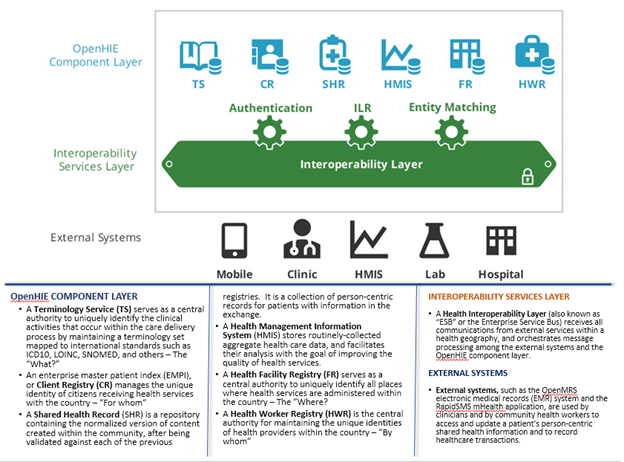Welcome
We believe in the collective knowledge of the masses and that as a network we are our own experts in both posing our questions and finding answers to them. As this is a new space within OpenHIE we would like you to add, edit and suggest changes on what you would like to see on the OpenHIE Implementers Network section. What answers do you want, what isn't really that clear (it may just be a reformatting or bringing together of content from the broader OpenHIE site but it is still important to know). WE have done a short poll internally and as a start have highlighted the following as areas that would be valuable, please contribute or call out what would fit in these areas and suggest others:
Basic OpenHIE Overview
The implementers page should have a basic OpenHIE overview to ensure that implementers actually understand what OHIE is and what it isn’t. The layman’s guide is a good start but would want a bit more
Architecture overview
Getting OpenHIE setup
The page should have a space where implementers can find “Quick Start” information in getting OpenHIE setup and or stood up. It should also unpack its design ideas (implementable and not just installable - in that it should be implemented after design of solution and not to design the solution)
FAQ
A list of FAQs that are and will arise out of the mailing lists
Implementations Descriptions
A space where existing and or planned implementations are listed AND Described. We would want to provide a very very basic easy to use implementation description template that would allow implementers to share what they are doing, basic designs and set the tone for conversations.
Is OpenHIE for Me
A high level overview of OpenHIE from what it does and what it doesn’t do. Looking to try and answer is OpenHIE for “me”; reference where it is and what is being done with it. How it has been applied in different ways.
Portal Views for 3 groups
Country Implementers View
Governance
In order to effectively provide governance oversight for the HIE architecture and its constituent business and technical components, it is recommended to establish a Governance Framework for sponsorship thus ensuring policies, standards and processes are established for health information exchange among "a set of participants.
"HIE governance refers to the establishment and oversight of a common set of behaviors, policies,
and standards that enable trusted electronic health information exchange among a set of participants."
-- U.S. Gov't Office of the National Coordinator for Health Information Technology (ONC)
- Organizational Principles: Identify generally applicable approaches for good self-governance;
- Trust Principles: Guide HIE governance entities on patient privacy, meaningful choice, and data management in HIE;
- Business Principles: Focus on responsible financial and operational policies for governance entities, with emphasis on transparency and HIE with the patients best interests in mind;
- Technical Principles: Express priorities for the use of standards in order to support the Trust and Business Principles as well as furthering the execution of interoperability.
It is is thought that the Principles and 'actions' above could be adopted as a starting place for determining the appropriate governance model or models needed for the context of low-resource settings, or the needs of a particular country or Domain setting.
Budgeting
Data Standards
Privacy Framework
Policies
Regulatory Framework
eHealth Framework
Domain Experts View
The OpenHIE architecture: Client Registry, Facilities Registry, IOL Layer…
OpenHIE integration with…
OpenMRS
DHIS2
IHE Profiles
Developer's View
- Interface development
OpenHIM Mediators
- Working with standards
- Core Workflows (fit for purpose, standards compliant)
